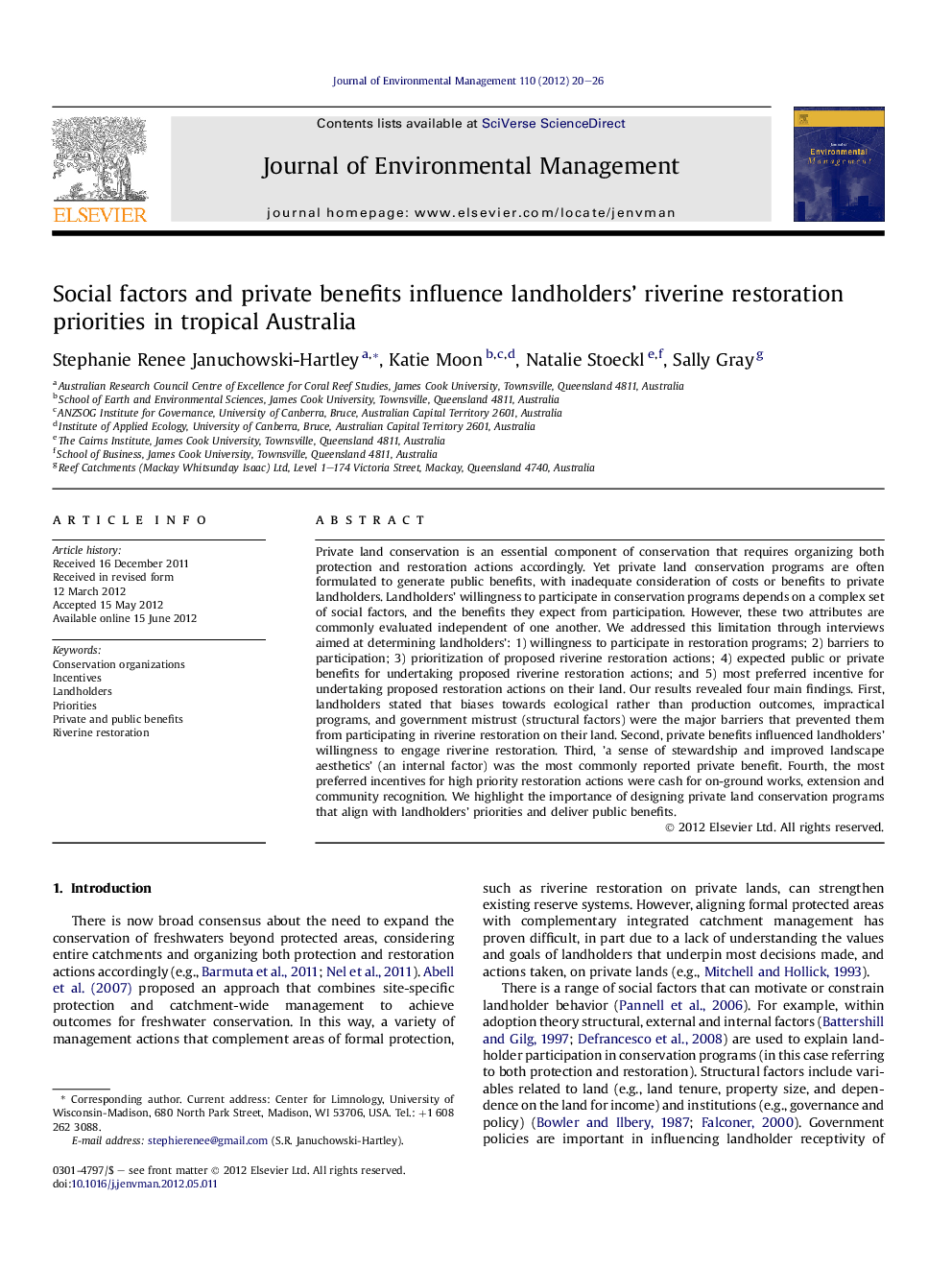| کد مقاله | کد نشریه | سال انتشار | مقاله انگلیسی | نسخه تمام متن |
|---|---|---|---|---|
| 1056502 | 1485302 | 2012 | 7 صفحه PDF | دانلود رایگان |

Private land conservation is an essential component of conservation that requires organizing both protection and restoration actions accordingly. Yet private land conservation programs are often formulated to generate public benefits, with inadequate consideration of costs or benefits to private landholders. Landholders' willingness to participate in conservation programs depends on a complex set of social factors, and the benefits they expect from participation. However, these two attributes are commonly evaluated independent of one another. We addressed this limitation through interviews aimed at determining landholders': 1) willingness to participate in restoration programs; 2) barriers to participation; 3) prioritization of proposed riverine restoration actions; 4) expected public or private benefits for undertaking proposed riverine restoration actions; and 5) most preferred incentive for undertaking proposed restoration actions on their land. Our results revealed four main findings. First, landholders stated that biases towards ecological rather than production outcomes, impractical programs, and government mistrust (structural factors) were the major barriers that prevented them from participating in riverine restoration on their land. Second, private benefits influenced landholders' willingness to engage riverine restoration. Third, ’a sense of stewardship and improved landscape aesthetics' (an internal factor) was the most commonly reported private benefit. Fourth, the most preferred incentives for high priority restoration actions were cash for on-ground works, extension and community recognition. We highlight the importance of designing private land conservation programs that align with landholders' priorities and deliver public benefits.
► Private land restoration programs need to provide both public and private benefits.
► It is important to identify restoration actions that landholders are willing to adopt.
► Landholders are more likely to adopt restoration actions that provide private benefit.
► Landholders require fewer incentives to implement actions that provide private benefits.
Journal: Journal of Environmental Management - Volume 110, 15 November 2012, Pages 20–26